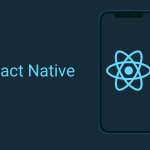The world of gaming is undergoing one of its biggest transformations ever a shift from physical consoles and bulky PCs to cloud gaming. Instead of relying on powerful hardware, cloud gaming lets players stream high-quality games directly from remote servers, much like watching a movie on Netflix.
This technology is redefining how games are played, distributed, and experienced across the globe. In 2025, cloud gaming is no longer a futuristic idea it’s a growing reality that’s changing the gaming industry forever.
Table of Contents
What is Cloud Gaming?
Cloud gaming, sometimes referred to as game streaming, works by hosting video games on powerful remote servers. When a player launches a game, it runs on those servers not on their local device. The gameplay video is streamed to the user in real time, while their input (like pressing buttons or moving a joystick) is sent back to the server.
How it Works
Cloud gaming operates using three key components:
- Game Servers: These powerful computers handle game processing and rendering.
- Streaming Technology: The game video is compressed and transmitted over the internet to the player’s device.
- Input Feedback System: Player actions (keyboard, mouse, or controller inputs) are sent back to the server almost instantly.
The challenge is maintaining extremely low latency the delay between pressing a button and seeing the result on-screen. Thanks to advancements in 5G networks, edge computing, and AI-based optimization, latency has dropped dramatically, making cloud gaming more seamless than ever.
Leading Platforms
Several major tech companies have already jumped into the cloud gaming revolution:
- Xbox Cloud Gaming (xCloud): Offers Game Pass subscribers access to hundreds of titles across devices.
- Amazon Luna: Integrates gaming into Amazon’s ecosystem with channel-based subscriptions.
- PlayStation Cloud Streaming: Expands Sony’s library to include PS4 and PS5 games on various devices.
These platforms are racing to offer smoother gameplay, larger libraries, and better performance, all without needing high-end local hardware.
Advantages
Cloud gaming offers numerous benefits to players, developers, and the gaming industry as a whole:
1. Accessibility for All:
Anyone can play the latest games without buying expensive consoles or GPUs. It makes high-quality gaming available to users with modest devices even a tablet or smartphone.
2. Instant Play, No Downloads:
Forget waiting hours for downloads or updates. Games are streamed instantly from the cloud, saving both time and storage space.
3. Cross-Device Experience:
Players can start a game on their PC, continue it on a phone, and finish it on a TV all synced through the cloud.
Challenges
While cloud gaming is promising, it still faces key challenges:
1. Internet Dependence:
A fast and stable internet connection is essential. In areas with poor connectivity, gameplay can lag or stutter.
2. Latency Issues:
Even slight delays can disrupt fast-paced action or competitive games. Developers are continually optimizing server locations and compression techniques to minimize lag.
3. Data Usage:
Streaming games in HD or 4K consumes massive amounts of data often several gigabytes per hour. This can be costly for users with limited internet plans.
The Role of 5G and Edge Computing
The rise of 5G technology and edge computing has accelerated cloud gaming’s growth. 5G networks offer ultra-low latency and high bandwidth, allowing smoother gameplay even on mobile devices.
Edge computing where servers are placed closer to end users further reduces lag by processing data nearby instead of at distant data centers. Together, these technologies make streaming high-quality, low-latency games more reliable and enjoyable.
How Cloud Gaming is Changing the Gaming Industry
The shift to the cloud is reshaping how the gaming industry operates:
- New Business Models: Subscription-based services (like Xbox Game Pass or Luna+) are replacing the traditional pay-per-game model.
- Global Gaming Access: Players from developing countries can now access AAA titles without needing expensive setups.
- Game Preservation: Cloud hosting allows older games to remain accessible even as hardware generations change.
This democratization of gaming is similar to what Netflix did for entertainment it’s making gaming more inclusive, affordable, and on-demand.
The Future of Cloud Gaming
The next phase of cloud gaming will focus on AI-driven optimization, interactive streaming, and personalized experiences. Games will adapt in real time to player skill levels, devices, and internet conditions.
We might also see mixed-reality and VR integration, where cloud servers handle heavy rendering for immersive worlds without needing high-end headsets.
Conclusion
Cloud gaming represents a revolution that is making gaming more accessible, flexible, and innovative than ever before. By removing hardware barriers and enabling seamless play across devices, it’s opening doors for millions of new gamers worldwide.
While challenges like connectivity and latency still exist, the rapid evolution of 5G and AI optimization ensures these issues will soon be overcome. Also Check How Ultimate Self-Driving Cars Are Reshaping Transport 2025







1 thought on “Cloud Gaming – Ultimate Future of Play – 2025”